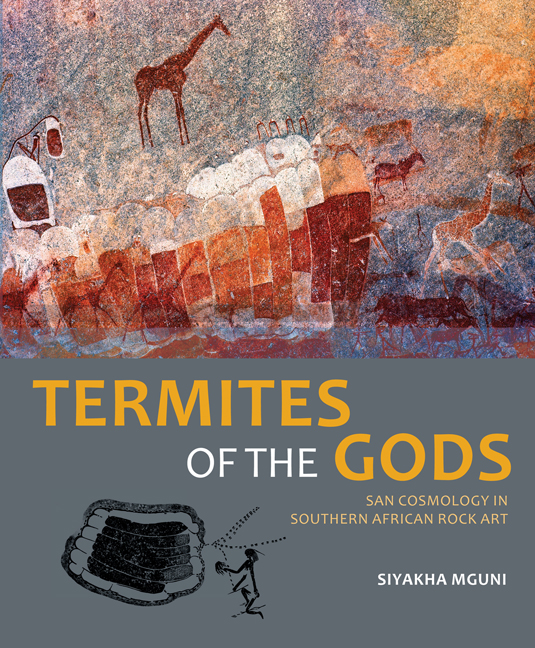Book contents
- Frontmatter
- Dedication
- Contents
- Acknowledgements
- Foreword
- Maps
- Explanatory notes
- Preface: Searching the pasts
- Introduction
- Chapter 1 Ancient mysteries on rocks
- Chapter 2 Meaning in San rock art
- Chapter 3 Tricksters, potency and dance
- Chapter 4 Ways of seeing San rock art
- Chapter 5 Probing deep into formlings
- Chapter 6 Formlings and San cosmological belief
- Chapter 7 Symbolic theatres of San cosmos
- Notes
- List of maps and figures
- Picture credits
- References
- Index
Chapter 2 - Meaning in San rock art
Published online by Cambridge University Press: 21 April 2018
- Frontmatter
- Dedication
- Contents
- Acknowledgements
- Foreword
- Maps
- Explanatory notes
- Preface: Searching the pasts
- Introduction
- Chapter 1 Ancient mysteries on rocks
- Chapter 2 Meaning in San rock art
- Chapter 3 Tricksters, potency and dance
- Chapter 4 Ways of seeing San rock art
- Chapter 5 Probing deep into formlings
- Chapter 6 Formlings and San cosmological belief
- Chapter 7 Symbolic theatres of San cosmos
- Notes
- List of maps and figures
- Picture credits
- References
- Index
Summary
So it is with the paintings, once recognised that however disjointed they may seem, they are also held together by an invisible force, to form a single coherent system and whole. Significance lies in the charge, in the relationships that bind the images together.
In previous chapters I described early views on the formlings and botanical images. Most were derived from perspectives formulated in the early 1900s. The late 1960s were a transitional period ushering in a new paradigm, the ethnographic approach. The earlier subjective and haphazard guessing at the meaning of San images was discredited as researchers began to seek scientifically objective ways of reading and explaining rock art. To understand and assess the changes in approach to formling interpretations over time, it is necessary to examine briefly the series of methodological advances that took place from the late 1960s onwards. New studies introduced rigorous and sensitive ways of analysing and interpreting San rock art. One advantage of scientific rigour was that it demonstrated distinguishing patterns in the choice and combinations of subject matter. This led to the realisation that the imagery was not haphazard but followed a graphic grammar that made the art a coherent system. Eland, for instance, were confirmed to be the dominant species in the Drakensberg and Cederberg, leading to a closer examination of the significance of this theme. This rigorous foundation led to the ethnographically informed understanding of San rock art symbolism. In relation to formlings in particular, it contributed fresh insights that opened up new vistas of knowledge to fill the previously longstanding lacunae.
Tim Maggs and Patricia Vinnicombe developed statistical analyses of rock art in South Africa. Further quantitative analyses were initiated in the 1970s and soon the emphasis was on creating numerical databases. Noteworthy patterns emerged, such as the predominance of certain themes in particular regions and the absence of others. These new approaches eliminated the previous guesswork, subjectivity and unsubstantiated explanations. Importantly, they revealed that the old assertions were essentially false. Nevertheless, such scientific empiricism in turn introduced its own problems. Quantitative numbers of images alone could not reveal anything about their meaning. In order to understand San rock art there was a need to ‘move from quantitative generalisations that sum up the art in many sites to a more particularist position’ that considers different panels in their own right.
- Type
- Chapter
- Information
- Termites of the GodsSan cosmology in southern African rock art, pp. 30 - 45Publisher: Wits University PressPrint publication year: 2015



